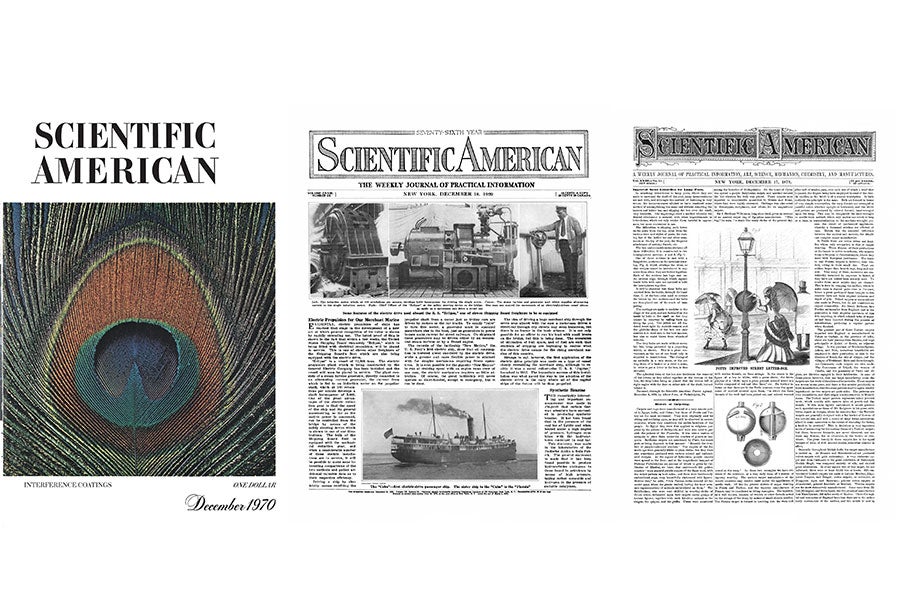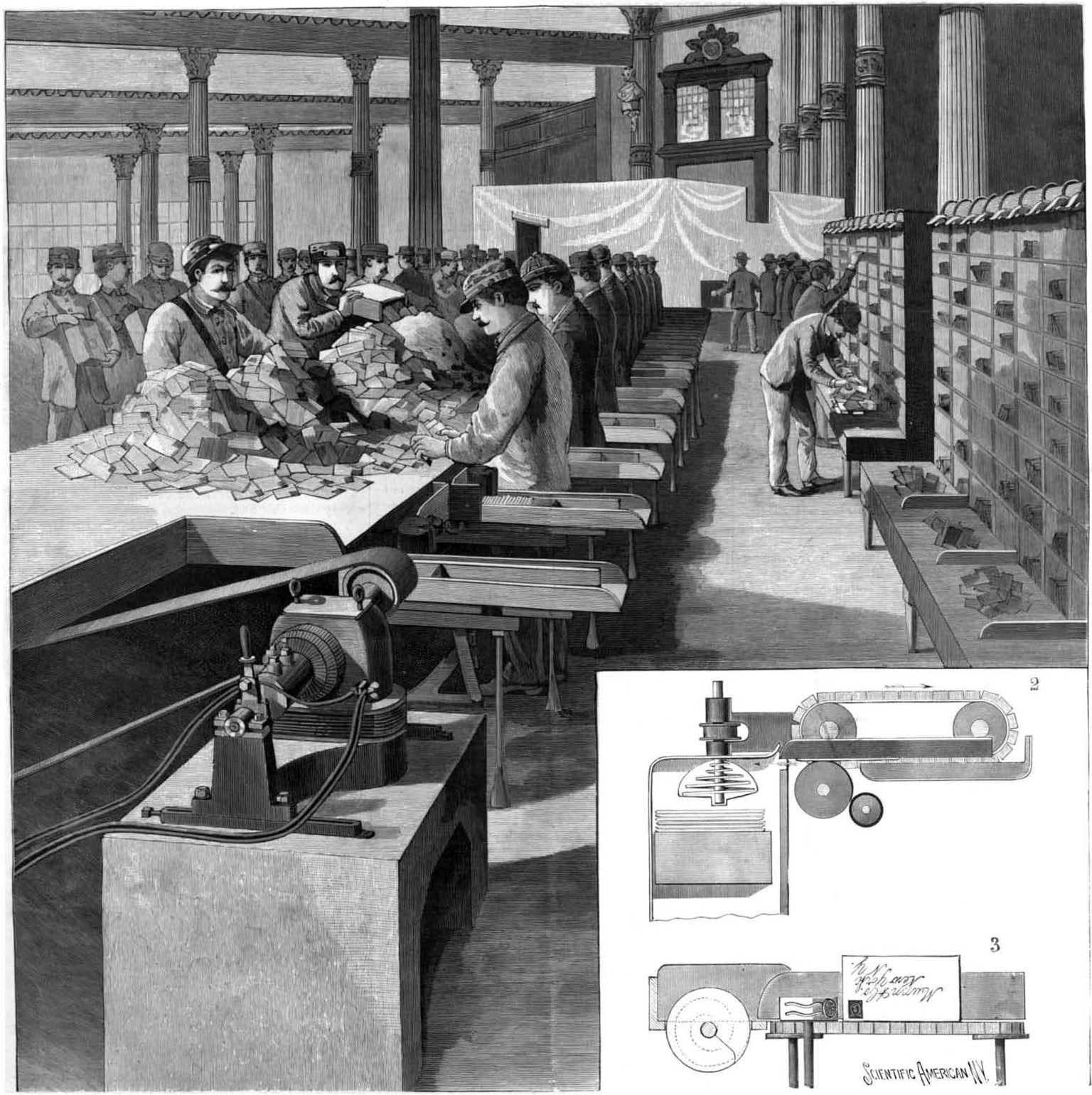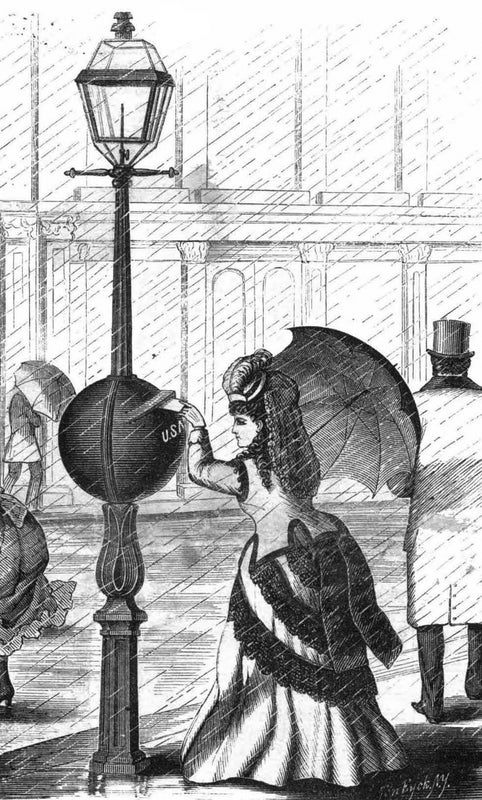1970
In Vitro Progress
“In laboratories at the Oldham General Hospital in Lancashire and at the University of Cambridge, human eggs have now been successfully brought to maturity, fertilized in vitro and cultured in vitro to the blastocyst stage of development, which is the stage immediately preceding the beginning of normal implantation of the fertilized egg in the uterus. Clinically it should be possible with these procedures to circumvent certain causes of infertility and to avert the development of embryos that otherwise could be expected to grow abnormally. Still further possibilities can be imagined. Eggs fertilized in the laboratory and cultivated to the blastocyst stage could be transferred back to the mother with an excellent chance of completing development normally. —R. G. Edwards and Ruth E. Fowler”
The first baby to be conceived by in vitro fertilization was born at Oldham hospital in July 1978.
1920
Battleship vs. Torpedo Plane
“Commenting on articles in the New York Tribune in which the abandonment of the superdreadnaught battleship was advocated, Rear Admiral Fiske says that most of the men who oppose the strenuous development of aeronautics have not carefully studied its possibilities. He believes with many others that aeronautics is destined to bring about ‘a revolution in warfare, in comparison with which the revolution brought about by the invention of the gun was like a vaudeville performance.’ Pretty strong words these for an admiral!”
After Currency Collapses
“One development of the impasse in import and export business between Germany and other countries growing out of the depressed value of the German mark is a modification of the barter system. Arrangements have been made by various British cotton interests who have arranged to furnish German cotton mills with raw cotton and take from them cotton yarn manufactured therefrom, the German manufacturers retaining a portion of the yarn as their payment for the use of their plant, of their labor, and other costs of manufacture.”
1870
Spiritualism
“This whole business of spiritualism has been the source of much mischief, and has brought insanity into many a family. Our readers ought to know, that no man of science, no sane man of intelligence has any faith in it. Before the light of science the whole thing is shown to be an imposition. But, as Dr. William A. Hammond says: ‘Spiritualism is a religion. As such it is held tenaciously by many well-meaning people. To reason with these would be a waste of words, just as much as would be the attempt to persuade a madman out of his delusion. Emotion, or interest, or accident might change them, but facts never.’
Patents for Post
“In attaching letter-boxes to lamp posts, this box is constructed in two hemispherical sections. The drop holes are made without movable lids, being protected by a projecting shield, as shown. This is a great convenience, as the use of one hand only is required to insert letters. The closing of an umbrella in a rain storm, or the setting down of a basket or a child in arms, in order to put a letter in the box, is thus obviated. Patented, through the Scientific American Patent Agency by Albert Potts, of Philadelphia, Pa.”

U.S. Postal Service

In 1775 Benjamin Franklin was appointed the U.S.'s first postmaster general. Letters and—more important for Scientific American—periodicals have been keeping citizens informed and engaged in the democratic process ever since. Two years after this magazine was founded in 1845, the U.S. Post Office started issuing postage stamps as a convenient way to pay for mailed items. This “folly” was decried by our forebears: delivery of the publication now had to be prepaid instead of being paid for by the recipient. The volume of mail has grown with the evolution of the technology to collect, sort and deliver it. In 1895 five billion pieces of mail went through sorting offices such as the one pictured above; by 2019, even in the era of e-mail, FedEx and UPS, 143 billion pieces of mail were delivered.


